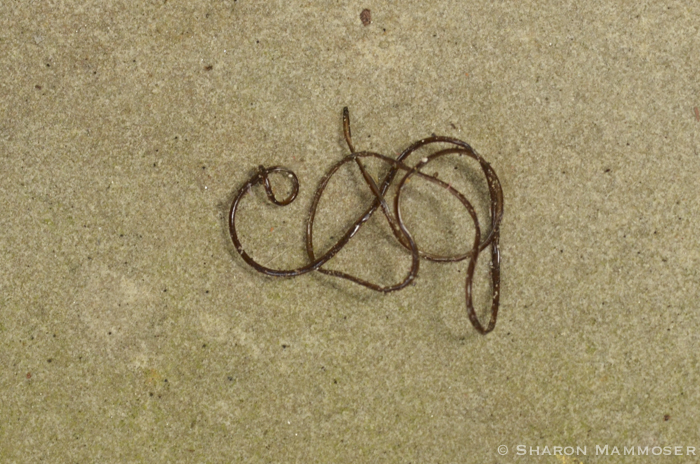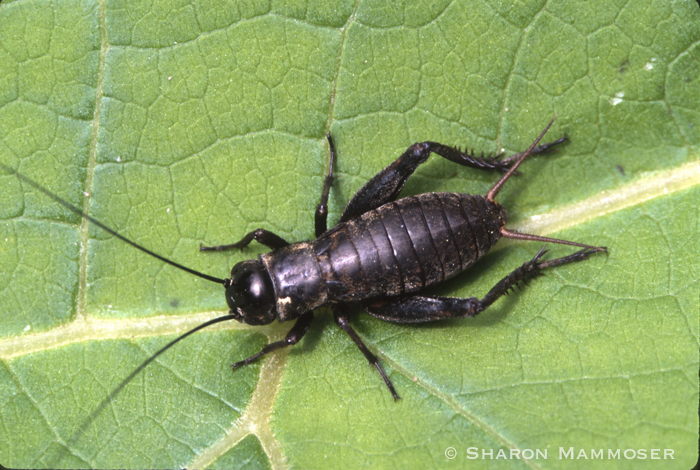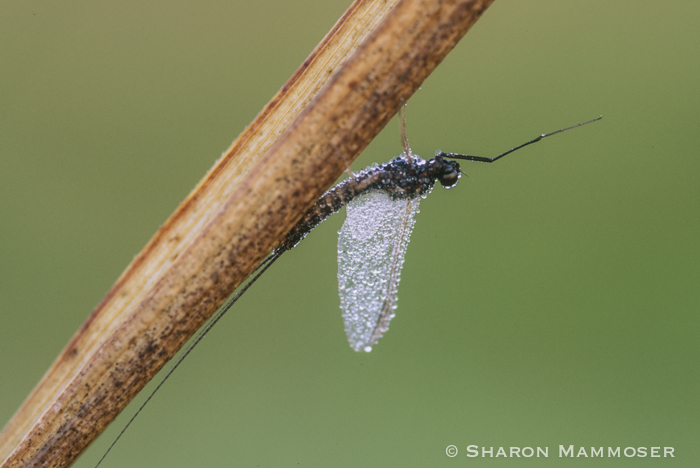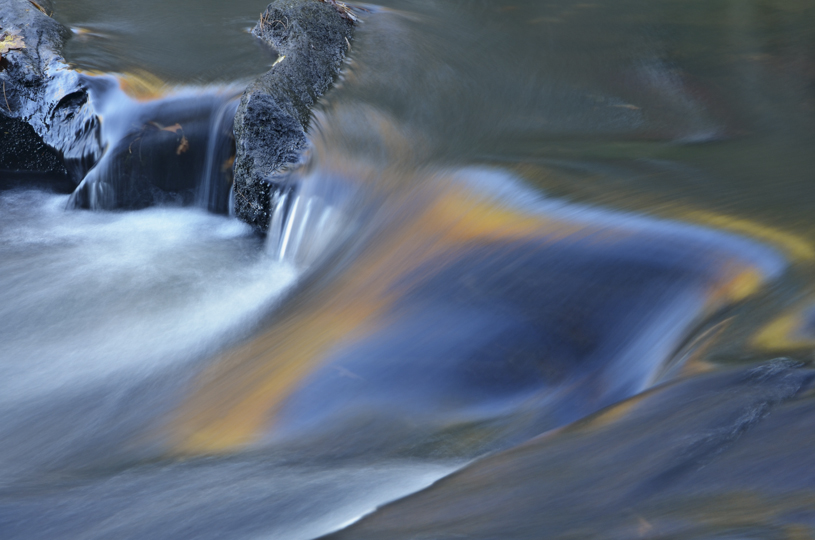 FAIR WARNING–if you are at all squeamish about tiny creatures that do incredibly amazing, but gross things, you might not appreciate this post. Then again, lots of things fit that category, including a handful of people I know… but that’s another story. Let’s stay on track.
FAIR WARNING–if you are at all squeamish about tiny creatures that do incredibly amazing, but gross things, you might not appreciate this post. Then again, lots of things fit that category, including a handful of people I know… but that’s another story. Let’s stay on track.
So last week’s puzzler was a video of a squirming critter–wow, that was weird looking, right? When I saw one for the first time I thought it was a string that somehow was ALIVE!
So yes, let’s get to the answer. The video was of a HORSEHAIR or Gordian WORM. It is a parasite with a fascinating life cycle, including the power to make grasshoppers, crickets and other insects do incredibly stupid things, like jumping to their deaths into water where they can’t swim and are sure to become lunch for some hungry fish. But let’s start at the beginning.
There are more than 300 species of Gordian Worms. They got their name because long ago people found them in troughs of water and thought that when a horse came to drink, some of its hair inevitably fell into the water and spontaneously BECAME ALIVE! Of course we know now that this isn’t true, but if you’ve ever seen one of these worms, you know they are super skinny, just like a hair from a horse’s mane or tail. You might have seen one in a puddle, pond, your dog’s water bowl or even a toilet (especially if YOU threw a cricket there.)

All are parasites on insects or invertebrates. There is one species that, incredibly, can get to be 6 feet long! That’s how tall I am and when I imagine a worm as long as me, wow, that leaves me shaking my head in wonder. Scientists do not know what creature these parasitize, likely some giant cockroach. Despite horror at these wiggly worms, they are quite harmless to humans and their pets and plants. So you need not worry about one getting inside of you and causing you to jump off of a cliff.
So here’s how their lifecycle works: First the eggs start off in a body of water. When they hatch out, some aquatic creature like a midge, mayfly or mosquito larva eats them. The aquatic invertebrate larva eventually emerges from the water to live its airborne life, taking the tiny worm larva in its gut on a flying trip. Somewhere along the way that insect gets eaten by a larger insect like a cricket, grasshopper, katydid, beetle or cockroach. The worm larva then goes to work, making its way into the body cavity of the host. They are tiny but absorb nutrients through their skin, growing and growing until they are anywhere from a few inches, to a foot to 6 feet long! Most are from 10 -14 inches in length and only 1/25th in

diameter. That about the size of a string of dental floss. They have no mouth or digestive system.
In the case of the Horsehair worm that parasitizes a cricket, the cricket continues to act normally with the exception of not chirping. A chirping cricket has a higher chance of becoming lunch for a bird or other animal and that wouldn’t be good for the developing worm larva. Eventually–and here’s the craziest part–the worm makes the cricket find water and jump in, something a cricket or grasshopper would not do normally as this surely means certain death. But sure enough, the worm-infested cricket leaps into the water and almost immediately, the worm bores its way out, freeing itself of its unsuspecting insect host. Scientists know they do this by producing neurotransmitters that make the host insect behave abnormally.
 Once in the water, the worm searches for a member of the opposite sex and upon finding one, mates. Males then die. Females will go on to lay up to 15 MILLION, yes I said million, eggs! She glues the eggs to stones or sticks, under water that will hatch in 15 days to 3 months depending on the temperature of the water. And when they hatch out, the cycle will continue.
Once in the water, the worm searches for a member of the opposite sex and upon finding one, mates. Males then die. Females will go on to lay up to 15 MILLION, yes I said million, eggs! She glues the eggs to stones or sticks, under water that will hatch in 15 days to 3 months depending on the temperature of the water. And when they hatch out, the cycle will continue.
Amazing right? Have you ever heard of something so bizarre?Have you ever seen one? If so I’d love to hear your story!
If you are interested in something a little less bizarre, Click HERE for the next Weekly Puzzler.
http://www.wired.com/2014/05/absurd-creature-horsehair-worm/


Yep. We see them in the swimming pool towards the end of summer. I didn’t know they were why the crickets were in the pool though. We have gobs of crickets that get in the pool. I doubt they all have hairworms in them, but I know some do! They’re gross.
Kylee, yes, they do tend to wind up in swimming pools though as you said, I’m sure they can’t all have parasites making them do it! They do have a pretty gruesome lifecycle. I’m glad I’m not a cricket!
Thanks for writing!